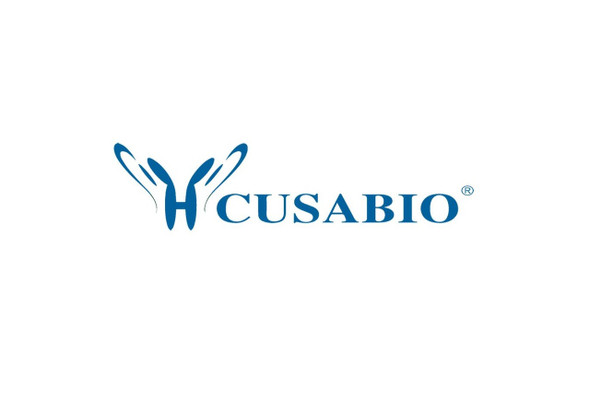Cusabio Human Recombinants
Recombinant Human Estrogen receptor beta (ESR2), partial | CSB-YP007831HU
- SKU:
- CSB-YP007831HU
- Availability:
- 25 - 35 Working Days
Description
Recombinant Human Estrogen receptor beta (ESR2), partial | CSB-YP007831HU | Cusabio
Alternative Name(s): Nuclear receptor subfamily 3 group A member 2
Gene Names: ESR2
Research Areas: Transcription
Organism: Homo sapiens (Human)
AA Sequence: DIKNSPSSLNSPSSYNCSQSILPLEHGSIYIPSSYVDSHHEYPAMTFYSPAVMNYSIPSNVTNLEGGPGRQTTSPNVLWPTPGHLSPLVVHRQLSHLYAEPQKSPWCEARSLEHTLPVNRETLKRKVSGNRCASPVTGPGSKRDAHFCAVCSDYASGYHYGVWSCEGCKAFFKRSIQGHNDYICPATNQCTIDKNRRKSCQACRLRKCYEVGMVKCGSRRERCGYRLVRRQRSADEQLHCAGKAKRSGGHAPRVRELLLDALSPEQLVLTLLEAEPPHVLISRPSAPFTEASMMMSLTKLADKELVHMISWAKKIPGFVELSLFDQVRLLESCWMEVLMMGLMWRSIDHPGKLIFAPDLVLDRDEGKCVEGILEIFDMLLATTSRFRELKLQHKEYLCVKAMILLNSSMYPLVTATQDADSSRKLAHLLNAVTDALVWVIAKSGISSQQQSMRLANLLMLLSHVRHASNKGMEHLLNMKCKNVVPVYDLLLEMLNAHVLRGCKSSITGSECSPAEDSKSKEGSQNPQSQ
Source: Yeast
Tag Info: N-terminal 6xHis-tagged
Expression Region: 2-530aa
Sequence Info: Partial
MW: 61.1 kDa
Purity: Greater than 90% as determined by SDS-PAGE.
Relevance: Nuclear hormone receptor. Binds estrogens with an affinity similar to that of ESR1, and activates expression of reporter genes containing estrogen response elents (ERE) in an estrogen-dependent manner. Isoform beta-cx lacks ligand binding ability and has no or only very low ere binding activity resulting in the loss of ligand-dependent transactivation ability. DNA-binding by ESR1 and ESR2 is rapidly lost at 37 degrees Celsius in the absence of ligand while in the presence of 17 beta-estradiol and 4-hydroxy-tamoxifen loss in DNA-binding at elevated tperature is more gradual.
Reference: The DNA sequence and analysis of human chromosome 14.Heilig R., Eckenberg R., Petit J.-L., Fonknechten N., Da Silva C., Cattolico L., Levy M., Barbe V., De Berardinis V., Ureta-Vidal A., Pelletier E., Vico V., Anthouard V., Rowen L., Madan A., Qin S., Sun H., Du H. , Pepin K., Artiguenave F., Robert C., Cruaud C., Bruels T., Jaillon O., Friedlander L., Samson G., Brottier P., Cure S., Segurens B., Aniere F., Samain S., Crespeau H., Abbasi N., Aiach N., Boscus D., Dickhoff R., Dors M., Dubois I., Friedman C., Gouyvenoux M., James R., Madan A., Mairey-Estrada B., Mangenot S., Martins N., Menard M., Oztas S., Ratcliffe A., Shaffer T., Trask B., Vacherie B., Bellemere C., Belser C., Besnard-Gonnet M., Bartol-Mavel D., Boutard M., Briez-Silla S., Combette S., Dufosse-Laurent V., Ferron C., Lechaplais C., Louesse C., Muselet D., Magdelenat G., Pateau E., Petit E., Sirvain-Trukniewicz P., Trybou A., Vega-Czarny N., Bataille E., Bluet E., Bordelais I., Dubois M., Dumont C., Guerin T., Haffray S., Hammadi R., Muanga J., Pellouin V., Robert D., Wunderle E., Gauguet G., Roy A., Sainte-Marthe L., Verdier J., Verdier-Discala C., Hillier L.W., Fulton L., McPherson J., Matsuda F., Wilson R., Scarpelli C., Gyapay G., Wincker P., Saurin W., Quetier F., Waterston R., Hood L., Weissenbach J.Nature 421:601-607(2003)
Storage: The shelf life is related to many factors, storage state, buffer ingredients, storage temperature and the stability of the protein itself. Generally, the shelf life of liquid form is 6 months at -20?/-80?. The shelf life of lyophilized form is 12 months at -20?/-80?.
Notes: Repeated freezing and thawing is not recommended. Store working aliquots at 4? for up to one week.
Function: Nuclear hormone receptor. Binds estrogens with an affinity similar to that of ESR1, and activates expression of reporter genes containing estrogen response elements (ERE) in an estrogen-dependent manner
Involvement in disease:
Subcellular Location: Nucleus
Protein Families: Nuclear hormone receptor family, NR3 subfamily
Tissue Specificity: Isoform 1 is expressed in testis and ovary, and at a lower level in heart, brain, placenta, liver, skeletal muscle, spleen, thymus, prostate, colon, bone marrow, mammary gland and uterus. Also found in uterine bone, breast, and ovarian tumor cell lines, but not in colon and liver tumors. Isoform 2 is expressed in spleen, thymus, testis and ovary and at a lower level in skeletal muscle, prostate, colon, small intestine, leukocytes, bone marrow, mammary gland and uterus. Isoform 4 is found in testis. Isoform 5 is expressed in testis, and at a lower level in spleen, thymus, ovary, mammary gland and uterus. Isoform 6 is expressed in testis, placenta, skeletal muscle, spleen and leukocytes, and at a lower level in heart, lung, liver, kidney, pancreas, thymus, prostate, colon, small intestine, bone marrow, mammary gland and uterus. Not expressed in brain.
Paythway: Estrogensignalingpathway
Form: Liquid or Lyophilized powder
Buffer: If the delivery form is liquid, the default storage buffer is Tris/PBS-based buffer, 5%-50% glycerol. If the delivery form is lyophilized powder, the buffer before lyophilization is Tris/PBS-based buffer, 6% Trehalose, pH 8.0.
Reconstitution: We recommend that this vial be briefly centrifuged prior to opening to bring the contents to the bottom. Please reconstitute protein in deionized sterile water to a concentration of 0.1-1.0 mg/mL.We recommend to add 5-50% of glycerol (final concentration) and aliquot for long-term storage at -20?/-80?. Our default final concentration of glycerol is 50%. Customers could use it as reference.
Uniprot ID: Q92731
HGNC Database Link: HGNC
UniGene Database Link: UniGene
KEGG Database Link: KEGG
STRING Database Link: STRING
OMIM Database Link: OMIM









